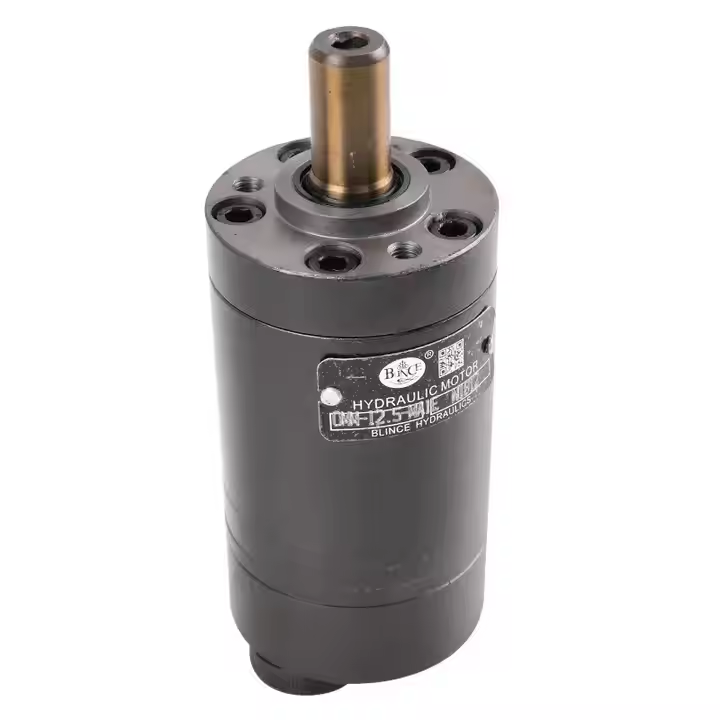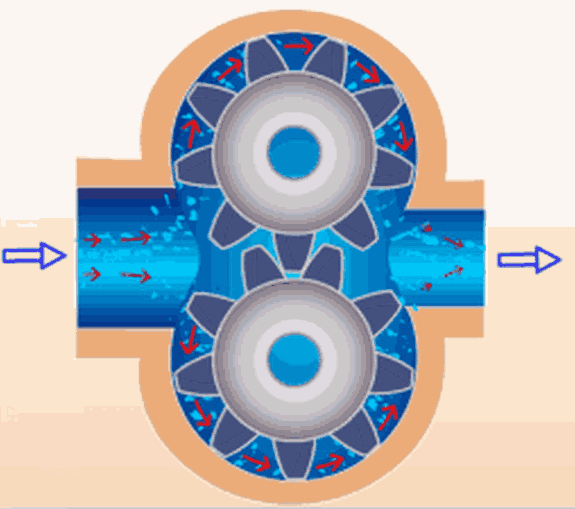In industrial and mobile equipment, hydraulic motors and electric motors are two of the most commonly used actuators. Both systems convert energy into mechanical force, but they differ significantly in structure, working principles, and performance under various conditions. This article explores their core differences, with a focus on Axial piston motors, Radial piston motors, Gerotor Motor, Vane Motor, and Gear Motor—the most widely used hydraulic motor types.

What is a Hydraulic Motor?
A hydraulic motor is an energy conversion device that transforms hydraulic pressure and flow into torque and rotational motion. These motors operate using incompressible fluids—often oil—based on hydrodynamic or hydrostatic principles. When pressurized fluid is directed into the system, it pushes against components like pistons or gears, generating motion.
Depending on the internal structure, there are several types of hydraulic motors:
lAxial piston motors: Designed for high-speed and high-efficiency applications, these motors use a set of pistons arranged parallel to the drive shaft.
lRadial piston motors: Known for high torque at low speeds, they arrange pistons perpendicular to the shaft and are used in heavy-duty machinery.·
lGerotor Motor: Compact and cost-effective, they provide moderate torque and speed control for lighter-duty operations.
lVane Motor: These use vanes mounted on a rotor to create fluid movement, offering smooth performance and consistent speed.
lGear Motor: The most robust and economical type, using interlocking gears to generate rotation. They're reliable and well-suited for harsh environments.
lThe power output of a hydraulic motor is determined by the design of the piston and cylinder, particularly the cylinder’s diameter and stroke length. Larger cylinders can produce greater force with less input energy, making hydraulic motors highly efficient in terms of power density.

What is an Electric Motor?
An electric motor converts electrical energy into mechanical motion. It operates by generating a magnetic field through electric current in wire windings, which interacts with permanent magnets or other fields to produce torque on a rotating shaft. These motors are found in everything from consumer electronics to industrial automation systems.
Electric motors work smoothly and offer precise control, especially when paired with linear actuators or stepper drives. They are ideal in clean environments and where digital feedback or networking is required.

How Do They Work?
Hydraulic Motor Operation
Hydraulic motors operate via fluid pressure. The system pump forces oil through the motor, causing pistons, vanes, or gears to move. The rotational force generated can be controlled based on fluid flow and pressure. Depending on the application, a designer might choose between Gear Motor for rugged durability or Axial piston motors for high-speed use.
Electric Motor Operation
Electric motors rely on electromagnetic interaction. When power is supplied, current flows through coils creating a magnetic field, which causes the rotor to spin. While electric motors can be compact and efficient, they are sensitive to overload, moisture, and debris.
Advantages and Disadvantages
✅ Electric Motors – Pros
lPrecision positioning and repeatability·
lClean, quiet, and easy to install
lSimple integration with digital control systems
lImmediate diagnostic feedback for maintenance
❌ Electric Motors – Cons
lHigher initial cost
lLimited environmental tolerance (moisture, dust, shock)
lRisk of overheating during continuous operation
lFixed torque-speed configurations without significant redesign
✅ Hydraulic Motors – Pros
lCapable of producing extremely high torque in compact sizes
lExcellent for harsh environments—dirt, water, extreme temperatures
lStart/stop under heavy loads without damage
lGreat low-speed control and stall-hold capability
lCan be placed remotely from the control unit
lHighly scalable—Radial piston motors are perfect for slow, high-torque tasks while Vane Motor is ideal for mid-speed, smooth operation
❌ Hydraulic Motors – Cons
lMore complex maintenance (fluid, filters, seals)
lRisk of leaks and contamination
lNoisier than electric counterparts
lLess efficient due to heat and friction loss
Summary
Choosing between a hydraulic motor and an electric motor depends on your application’s power requirements, environmental conditions, and control needs.
For rugged applications requiring high torque and reliability in tough environments, hydraulic motors—especially Gear Motor, Axial piston motors, and Radial piston motors—are often the best fit.
For clean, precise, and programmable environments, electric motors offer advantages in control and simplicity.
Each hydraulic motor type—whether Gerotor Motor, Vane Motor, or others—has unique strengths. Understanding these differences helps engineers and decision-makers select the most cost-effective, reliable, and high-performing solution.


























